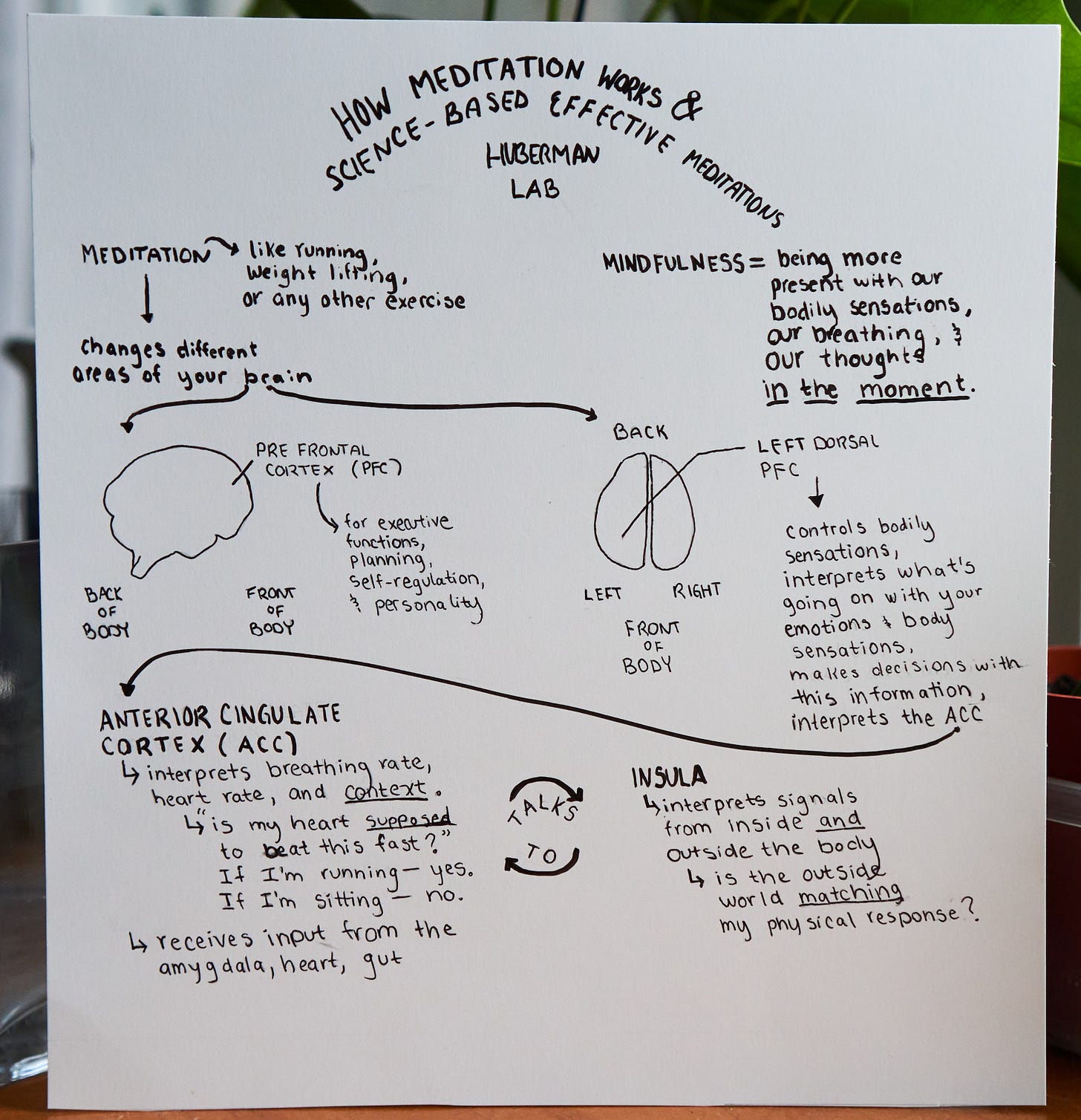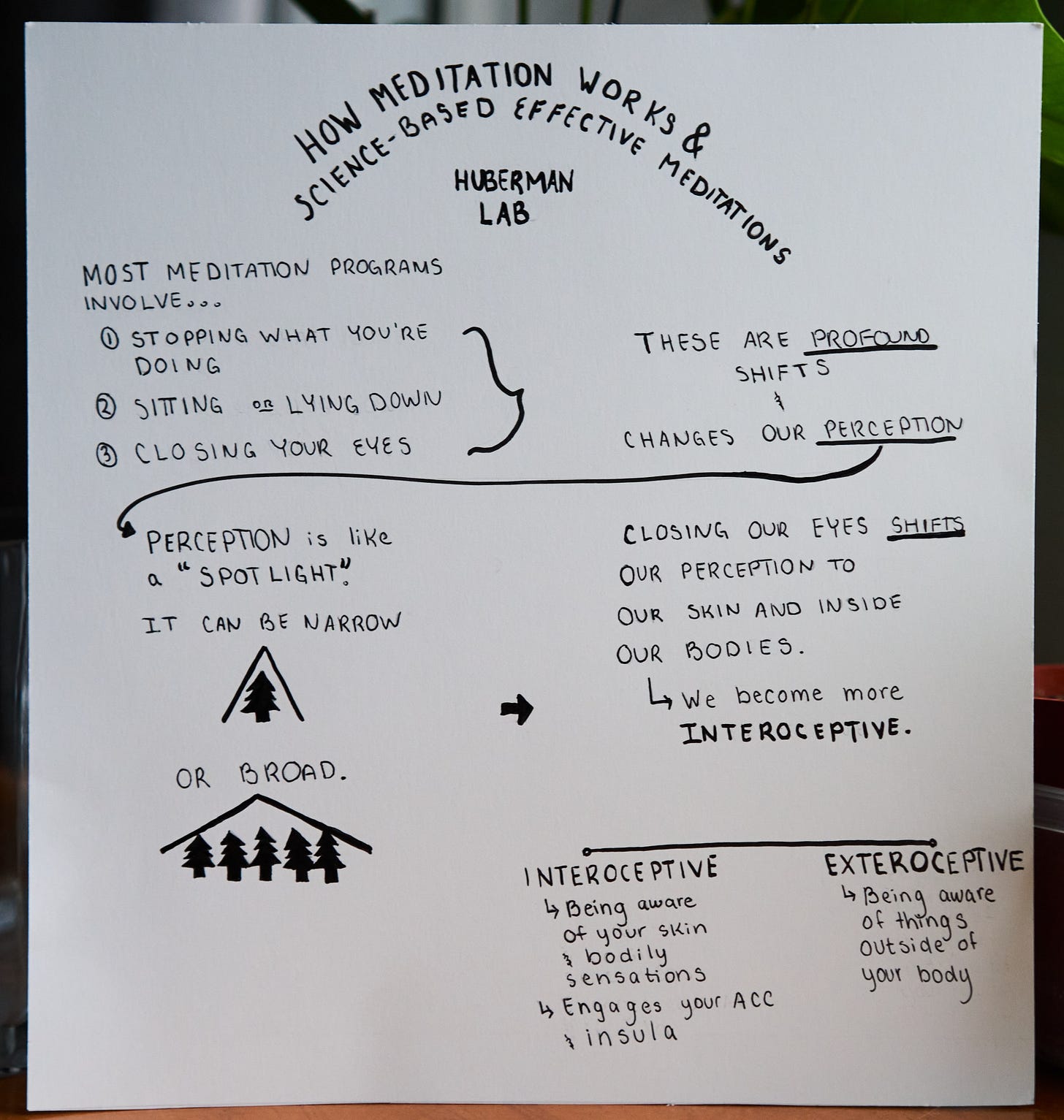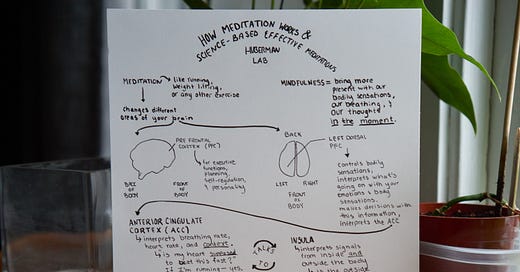Meditation I: An Inward Walk Out of the Pandemic
Nearly 3 years later, learning the science behind meditation
I started meditating in 2020 for obvious reasons. A few months into the pandemic, I needed to get away from the walls and rooms confining me while also keeping my distance from others.
I decided to go on a drive alone.
I followed a loop up through the next town, a route I used to take for work before the stay at home orders. Somewhere down Highway 3 under a cloud of anxiety, I imagined my own death. I was in a hospital bed. Thin, sky blue blankets draped over my body, and I was surrounded by family and friends. Someone got tear-eyed. I can’t recall if I did while my chest tightened in the driver’s seat. I took the next turn and headed back to my rental home.
Driving with my chosen playlist for the season usually takes enough of my brain’s focus to quiet down the whole of me, but I couldn’t shake off the vision. It gripped me as I watched Covid cases climb and worried every time my roommate came home from her shift at the hospital.
Eventually, the tight hold the pandemic held over me loosened, as it did for many people but not all. I called an emergency counseling line one night to come down from an anxiety attack. I started therapy later in the next year for other reasons.
I’ve always been interested in things that get me out of my body--like running with a cadence such that the miles are forgotten just as quickly as they come. It’s why I like driving, watching movies, and reading (especially science fiction). But just as I can bask in losing myself on the road or in a story, with meditation I can revel in going on an “inward walk” through whatever landscape I’ve chosen in the form of a self-guided practice or alongside a recording from an instructor:
I start by closing my eyes. I relax my face and shoulders before scanning the rest of my body. Depending on what practice I am doing, I may open my eyes again. I may focus on what I can hear in the room or on a specific feeling in my body. I go for about 10 minutes. If I lose concentration and my thoughts wander, that’s okay. I refocus and keep going.
We’re moving into our third year since the pandemic. I’m still meditating, this time with career coach Kerri Twigg. Three years on, as I’ve experienced more physical clarity and mental calm, I’m curious about the science of meditation. I just finished listening to an episode on the Huberman Lab, a podcast by neuroscientist and Stanford professor Andrew Huberman, on the topic. In “How Meditation Works & Science-Based Effective Meditations,” Dr. Huberman starts off describing the different areas of the brain meditation most activates. He then describes common components of a typical mediation program and how each step is a profound shift in how we receive information from the world. When we shift our perception by closing or opening our eyes, we travel along a spectrum between interoception and exteroception, as seen in the second drawing below. These two graphics are some of my personal notes from just the first half of the episode.


Most of the meditation I’ve done so far has been more interoceptive. I’m closing my eyes. I’m slowing down my breath. I’m accepting whatever thoughts and images come up. In the podcast, Dr. Huberman shares that he finds most people, by default, are naturally more interoceptive. With that in mind, he suggests meditating to strengthen our weaknesses. I’m interested in what more exteroceptive practices would be like for me (i.e. eyes open). The idea is to train our brain’s ability to adapt to a variety of life circumstances. When we want to focus on our own reaction, we’re able to. And when we want to focus on what’s happening outside of ourselves, we’re able to.
Before you go…
Whether it’s meditation or another activity, is there an area of your health & wellbeing you are interested in taking more care of in 2023?
Kerri Twigg has worked as a drama teacher, human resources consultant, career coach, and meditation instructor. After helping people land dream jobs, she noticed her clients would gradually end up as unhappy as they had been before. That’s when she started teaching meditation. The blog post linked above (and again here) shows how she approaches the two.
While it’s been over a month since I first started this newsletter, I only just told most of my friends and family last week through my Instagram. I wanted to feel comfortable with the project before showing others. Thanks to my family and friends--old and new--who have subscribed. I appreciate it.
Something to Watch and to Listen: Ocean Vuong is a critically acclaimed Vietnamese American poet and novelist. Listening to Ocean speak is always a treat. He carefully describes experiences in his life that in turn reflect on American culture and language. Some of my favorite interviews of his are on the Talk Easy and On Being podcasts and this interview with the Louisiana Channel from last September.
Whether you’re passing by or interested in following along, thank you for being here.
It’s a tricky thing: this transaction of time, attention, and resources. Your subscription helps me keep going, which is more valuable than you know.



I personally have been meditating off and on for years but thanks to Judy’s analysis and research I now know other means for the practice. Judy does an excellent job of combining her personal experience with the research of a Stanford professor to educate me on how to use meditation other than for easing anxiety and recentering. The concept of utilizing the practice to strengthen weaknesses in relation to reacting and not reacting is appealing and I imagine can help improve a lot of areas within one’s personal and professional life.